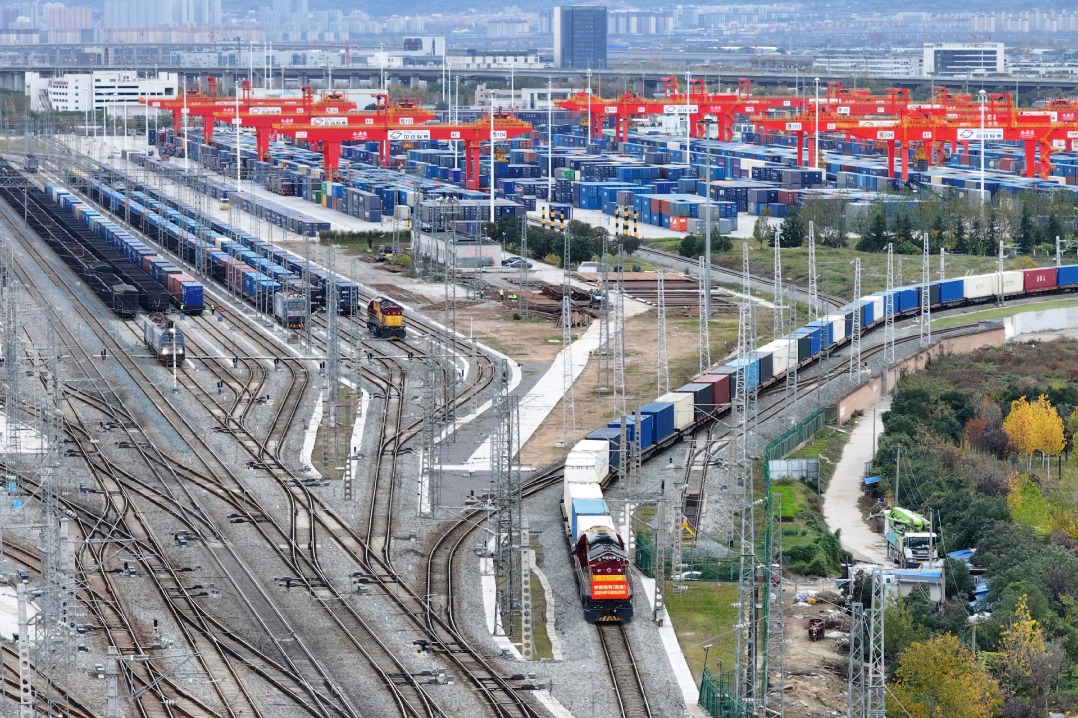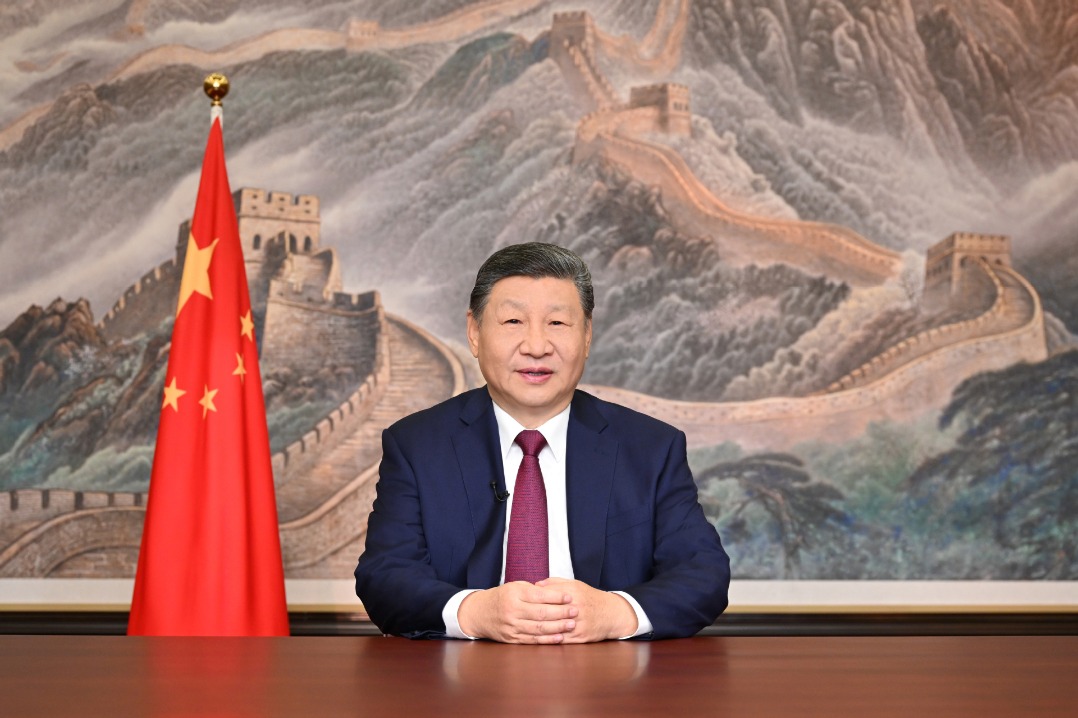Respecting and Protecting the Rights of All Ethnic Groups in Xinjiang

III. Economic Rights
Upholding a people-centered philosophy, Xinjiang pursues rapid economic and social development. More effort and investment have been made to improve the people's wellbeing. All ethnic groups enjoy equal opportunities and economic rights, and are developing the region together and building better lives.
Equal right to economic development is guaranteed. The right to development is an inalienable human right, and the essential precondition for the realization of all human rights. Since the PRC was founded in 1949, the people of Xinjiang have been working hard together and have achieved a historic transformation-with many undertakings starting from scratch and now thriving-from extreme poverty to moderate prosperity in all respects.
Agriculture and animal husbandry have developed and modernized; industries have grown rapidly with the integrative application of information, digital and smart technologies; the service sector has seen its status and role expand as a driver of economic growth. All ethnic groups enjoy equal rights to participation and development, moving steadily towards the goal of common prosperity.
From 1955 to 2020, Xinjiang's GDP soared from RMB 1.2 billion to RMB 1.4 trillion, and its per capita GDP rose from RMB 241 to RMB 53,593, a notable increase of about 160 times and 30 times at constant prices. From 1978 to 2020, the per capita disposable income of urban residents rose from RMB 319 to RMB 34,838, and that of rural residents from RMB 119 to RMB 14,056, both representing an increase of over 100 times.
Extreme poverty has been eradicated. Poverty is a major problem that plagues humanity, and poverty eradication is the most arduous global human rights cause in the contemporary era. Historical and natural factors have led to Xinjiang being long underdeveloped, with a large poor population.
The Hotan, Kashgar, and Aksu prefectures and the Kizilsu Kirgiz Autonomous Prefecture in southern Xinjiang suffered from a harsh environment, weak economic foundations, and seriously inadequate opportunities for employment. Ranked by the state as severely impoverished areas, they presented the toughest challenge in China's fight against poverty. Supported by the central government and the region's partners in the national paired assistance program, Xinjiang has adopted poverty alleviation measures to help the poor, such as developing businesses, creating job opportunities, improving education and health care, renovating dilapidated rural houses, and relocating the poor from inhospitable areas. These measures have proved effective and remarkable results have been achieved.
By the end of 2020, more than 2.7 million rural people in Xinjiang living below the current poverty line had emerged from poverty, and 3,666 villages and 32 counties were no longer classified as poor. Rural residents in poor areas have seen rapid growth in both incomes and consumption spending. Their per capita disposable income was RMB 13,052 in 2020, an average annual increase of 10.8 percent since 2012; their per capital consumption spending was RMB 9,007 in 2020, an average annual increase of 9 percent since 2013. The poor population's rights to subsistence and development have been guaranteed.
Basic standard of living is enhanced. The right to a basic standard of living ensures human dignity. Xinjiang spends more than 70 percent of its general public budget every year on ensuring and improving people's wellbeing. It has carried out a raft of programs to benefit the local people, significantly improving their lives in all respects. From having their basic needs met to enjoying decent lives, the people of Xinjiang have experienced a historic leap in their standard of living. Durable consumer goods, once absent in the past, are now widely available, showing how consumption is growing in quantity and quality.
During the 13th Five-year Plan period (2016-2020), a total of 1.2 million rural dwellings for low-income families were completed, and construction started on 1.3 million urban affordable housing units, benefiting millions of people. All villages have access to asphalt and concrete roads, bus services, three-phase power, and broadband services. Expressways and high-speed railways have been built from scratch, and the former cover all prefectures and cities. Twenty-two civil airports have been completed and opened, the highest among all provincial-level administrative units in China. Modern vehicles and communication tools have become common in both urban and rural households. Every effort is being made to ensure the provision of express delivery services in every village.
The right to work is protected. Work provides the means for people to subsist. Everyone has the right to work and create a better life. Xinjiang has made employment the priority among its measures for improving the people's wellbeing. It has adopted a pro-employment strategy, encouraging individual initiative, leveraging market mechanisms, providing government support, and promoting entrepreneurship.
The local government has ramped up efforts in vocational training. To increase the employability of workers, it has worked to boost professional competence and skills training by developing vocational education institutions, such as vocational and technical colleges, secondary technical schools, technician training schools, employment training centers, training centers for enterprise employees, and vocational education and training centers.
Xinjiang has provided additional support to severely impoverished areas, and to key groups including university graduates, surplus urban and rural labor, workers from poor families, people experiencing difficulties in finding work, and rural women. It has provided dynamic, categorized and targeted assistance to people with employment difficulties and zero-employment families so as to ensure that each family has at least one member in work.
Workers' job preferences are fully respected, and structured conditions have been created for people to find jobs locally, to seek work in urban areas, or to start their own businesses. Almost all those with the ability to work have been provided with jobs.
From 2014 to 2020, the total employed population in Xinjiang grew from 11.4 million to 13.6 million, up by nearly 20 percent. The urban employed population grew by an annual average of 470,000, of which 149,000, or nearly 32 percent, were in southern Xinjiang. An average of 2.8 million urban job opportunities were provided annually to the surplus rural workforce, of which 1.7 million, or more than 60 percent, were offered to those in southern Xinjiang.
While promoting employment, Xinjiang guarantees legitimate labor rights and interests in accordance with the law, such as equal employment opportunities, remuneration, social insurance, rest and leave, and occupational safety. It has put in place a supervisory system to protect labor rights and interests, addressing reports and complaints concerning wage arrears, failure to provide labor contracts, and other infringements. Judicial authorities, human resource and social security departments, and trade union organizations have worked closely to investigate and correct infringements of labor rights and interests. Labor rights protection has been constantly improved in Xinjiang.


































